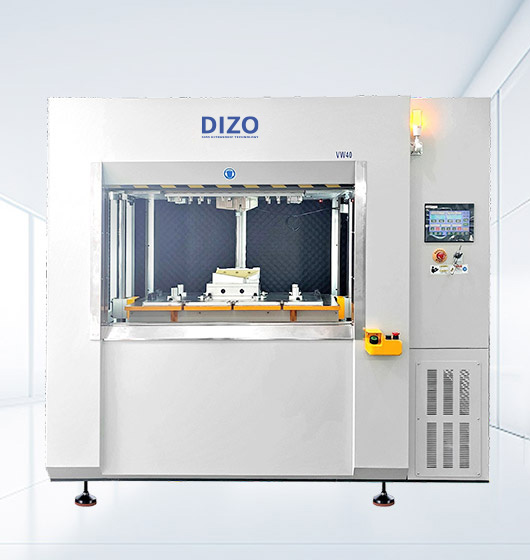What is Plastic Welding? How to Weld Plastic Together?
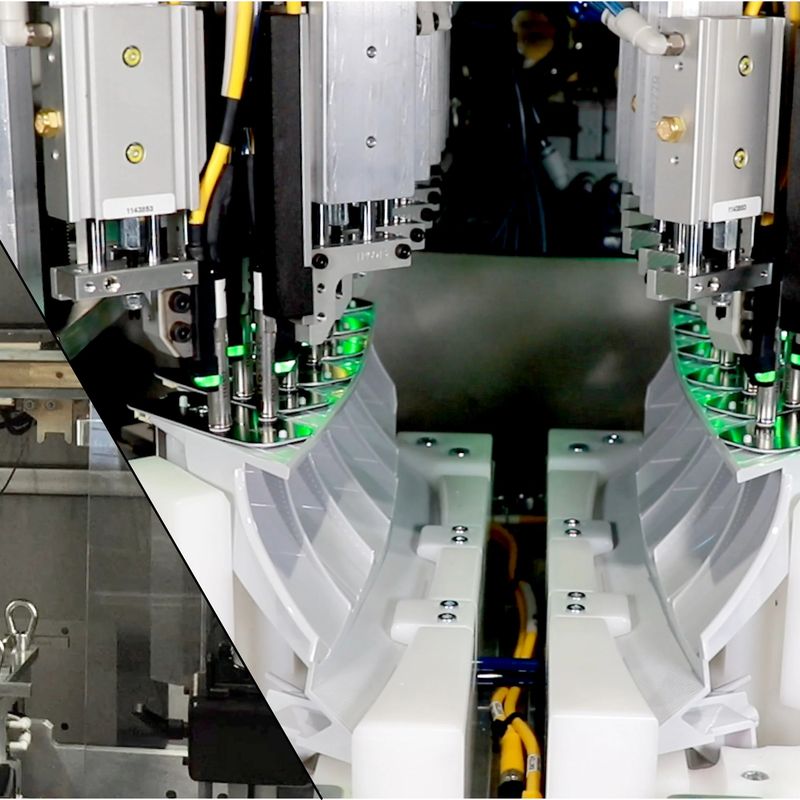
Plastic welding is a crucial process used in industries ranging from automotive and aerospace to medical and construction. It involves joining plastic materials through the application of heat and pressure, creating a durable and strong bond.
This article explores the fundamentals of plastic welding, including its process, techniques, benefits, and limitations, compares plastic welding to metal welding, discusses suitable plastic types, and guides you on choosing the right material and method for your project.

Table of Contents
What is Plastic Welding?
How to Weld Plastic? The Plastic Welding Process
Plastic Welding Techniques: Benefits and Limitations
Advantages of Welding Plastic
Disadvantages of Welding Plastic
Applications of Plastic Welded Parts
Plastic Welding vs. Metal Welding
Types of Plastics That Can Be Welded
How to Choose the Right Plastic for Welding
FAQs
Wrapping It Up: Contact Dizo and Choose a Plastic Welder Today
What is Plastic Welding?
Plastic welding is a process that joins plastic materials by applying heat and pressure, causing them to melt and fuse into a strong bond. It works with thermoplastic materials like polyethylene, PVC, and ABS, which can be reshaped when heated.
Welding plastic together creates a bond that is often as strong, if not stronger, than the original material. Various methods of joining plastics exist, such as hot gas welding, ultrasonic welding, and laser welding, each tailored to specific applications and materials.
How to Weld Plastic? The Plastic Welding Process
The process of welding plastic together involves several crucial steps to ensure a secure and durable bond between the surfaces.
Though the exact procedure may vary based on the method being used, these steps form the core of the plastic welding process. Below are the key steps in the plastic welding process:
1. Preparation
Before starting the welding process, plastic welding technology requires proper preparation to ensure a successful bond. Key steps include:
- Cleaning: Clean the plastic surfaces thoroughly, removing contaminants like dirt, grease, or oil. Specialized cleaning solutions or solvents may be used.
- Surface Preparation: In some cases, roughening the surfaces with sandpaper can improve adhesion and ensure a stronger bond.
- Alignment: Proper alignment of the plastic parts is essential to ensure that they are positioned correctly before welding. Misalignment can result in uneven or weak welds.
2. Clamping
Once the plastic parts are cleaned and aligned, they need to be securely clamped together. Clamping holds the pieces in place during the welding process, preventing any movement that could cause gaps or misalignment in the final weld.
- Clamps: Specialized clamps or fixtures are used to secure the plastic pieces during welding.
- Pressure: The amount of pressure used in clamping will vary based on the type of plastic and the welding method. Too little pressure may result in a weak joint, while too much pressure can distort the plastic.
3. Heating
The next critical step in the plastic welding process is heating. This step involves applying heat to the plastic surfaces to soften them, allowing them to fuse together.
- Heating Source: Heat is applied using tools like hot air guns, infrared radiation, or heated plates. Temperature control is crucial to avoid burning or under-heating the plastic.
- Temperature Control: Each plastic material has a specific temperature at which it becomes soft and can be welded. The welding operator must monitor and control the temperature carefully.
4. Welding
Once the plastic parts have been properly heated, it's time to weld them together. This is the stage where the actual fusion takes place, and the strength of the joint is created.
- Fusing the Parts: The heated surfaces of the plastic are pressed together to create a solid bond. In some methods, a filler material may be used to strengthen the joint.
- Fusion Time: The duration of the welding process varies based on material type, thickness, and method. Adequate pressure should be applied to ensure a strong bond.
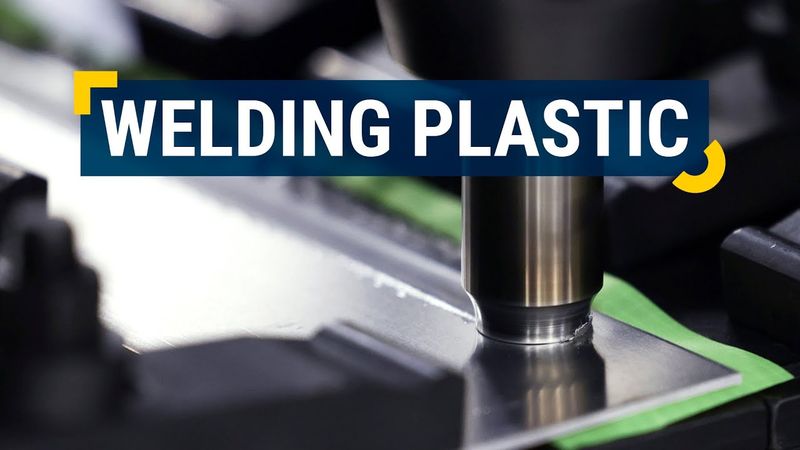
5. Cooling
Cooling is the final stage of the welding process. After the plastic parts are fused together, they need to cool and solidify to form a strong, stable bond.
- Cooling Time: Cooling time depends on material thickness. Quick cooling can cause warping, so controlled, slow cooling is preferred.
- Cooling Environment: Air circulation or cooling fixtures may be used to control the cooling rate for large or precision-critical parts.
6. Finishing
Once the weld has cooled and solidified, the final step is finishing. This step ensures that the welded parts are smooth, free from defects, and ready for use or further processing.
- Excess Material Removal: Trim any excess material that may have flowed out during welding.
- Surface Smoothing: If necessary, the welded joint can be smoothed or polished for a clean finish.
- Inspection: Visual checks and tests ensure the weld is strong and meets quality standards.
By following these steps, plastic welding can result in a secure, durable bond between plastic materials.
Plastic Welding Techniques: Benefits and Limitations
Plastic welding is not a one-size-fits-all solution; different techniques are suited for different applications, materials, and production needs.
Each method comes with its own set of benefits and limitations. Let's dive into some of the most commonly used plastic welding techniques:
Hot Gas Welding
Benefits:
- Simple and versatile, suitable for a wide range of thermoplastics.
- Offers strong, durable joints, ideal for repairing and joining plastic components in industries like automotive and construction.
Limitations:
- Requires significant skill and experience to avoid overheating the plastic.
- Slower than some other techniques, making it less suitable for mass production.
Speed Welding
Benefits:
- Faster than traditional welding methods, improving productivity.
- Great for large-volume production environments where time is critical.
Limitations:
- Limited to specific thermoplastic materials.
- Less precision than other methods like ultrasonic or laser welding.
Laser Welding
Benefits:
- Offers high precision, ideal for joining thin or intricate plastic components.
- Minimal thermal distortion, which is especially beneficial for sensitive applications such as medical devices.
Limitations:
- Expensive equipment and setup.
- Best suited for clear, thin materials and may struggle with thicker, opaque plastics.
Ultrasonic Welding
Benefits:
- Extremely fast and energy-efficient, ideal for high-speed production.
- No need for adhesives or solvents, which can be environmentally advantageous.
- Creates clean, strong bonds without the risk of plastic distortion.
Limitations:
- Limited to small, lightweight plastic parts.
- Requires high-frequency sound waves, which can be difficult to control for complex or thick materials.
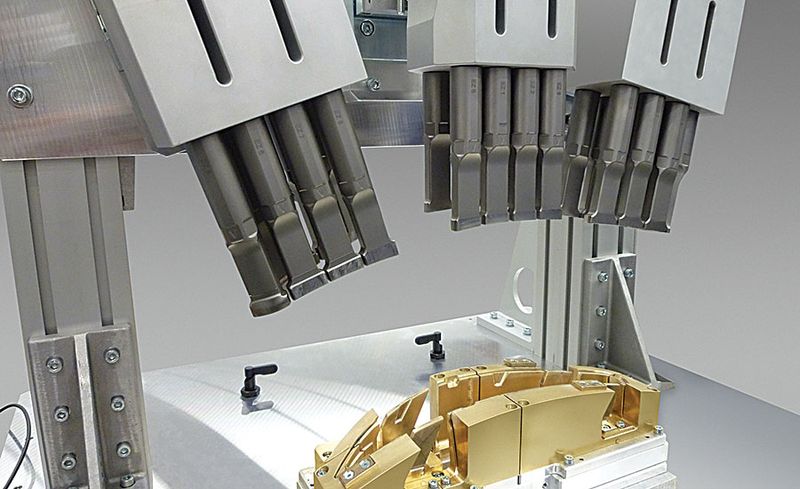
Spin Welding
Benefits:
- Excellent for joining circular or cylindrical plastic parts.
- Fast and efficient, often used in automotive manufacturing for components like fuel tanks and valves.
Limitations:
- Limited to circular geometries and relatively simple designs.
- The technique can be challenging to apply to non-symmetrical parts.
Vibration Welding
Benefits:
- Ideal for large, flat parts with complex geometries.
- Produces a strong bond without needing additional adhesives or solvents.
- High production rates for larger parts.
Limitations:
- Best suited for rigid thermoplastics, not for flexible materials.
- Not as precise as laser or ultrasonic welding for delicate tasks.
Hot Plate Welding
Benefits:
- Suitable for large, thick plastic parts.
- Effective for joining hard-to-weld materials with excellent joint strength.
- Capable of welding both similar and dissimilar materials.
Limitations:
- Slower process compared to ultrasonic or laser welding.
- Requires precise temperature control to avoid overheating and material degradation.
High-Frequency Welding
Benefits:
- Excellent for welding thin plastic films and sheets.
- High-speed process that is often used in packaging, medical, and automotive industries.
- Produces strong, hermetically sealed joints.
Limitations:
- Limited to thin, flexible materials like PVC, which restricts its use with thicker plastics.
- Specialized equipment can be expensive.
Solvent Welding
Benefits:
- Provides a strong, airtight bond, ideal for plumbing and pipe systems.
- Simple and cost-effective for low-volume or fieldwork.
Limitations:
- Requires solvents that can be hazardous, raising health and environmental concerns.
- Bond strength may not be as durable as heat-based welding techniques for some plastics.
Injection Welding
Benefits:
- Excellent for high-volume manufacturing, especially for small, complex parts.
- Can be integrated into injection molding processes, reducing labor and costs.
Limitations:
- Requires high investment in molds and machinery.
- Limited to parts that can be molded into specific shapes.
Extrusion Welding
Benefits:
- Ideal for large-scale applications such as pipe welding or creating plastic sheets.
- Can handle high-volume production efficiently.
Limitations:
- Requires additional equipment and setup, which can be costly for smaller operations.
- Not suitable for thin or delicate materials.
Advantages of Welding Plastic
Plastic welding offers numerous benefits that make it a preferred method for joining plastic components across various industries. Some key advantages include:
1. Strong, Durable Joints
Plastic welding creates a bond as strong as or stronger than the original material. The fused plastic molecules form a seamless, cohesive joint that is capable of withstanding stress, pressure, and environmental factors such as moisture, heat, and chemicals.
2. Versatility in Material Types
Plastic welding can be used on a wide variety of thermoplastic materials, such as polyethylene (PE), polypropylene (PP), polyvinyl chloride (PVC), and more.
This versatility ensures that it can be adapted to meet the needs of different industries and applications.
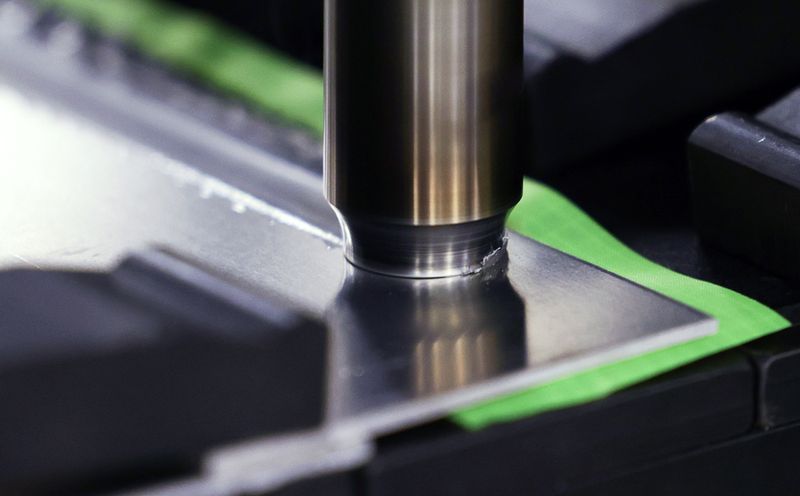
3. No Need for Additional Materials
Unlike other joining methods that require adhesives, fasteners, or solvents, plastic welding typically doesn't need additional materials to form a bond.
This leads to cleaner, more reliable joints and reduces the risk of contamination in sensitive applications like food packaging or medical devices.
4. Cost-Effective for Large-Scale Production
In high-volume manufacturing, plastic welding is a cost-efficient method due to its speed and automation potential. Plastic welding methods like ultrasonic welding or hot plate welding can be automated, reducing labor costs and improving production efficiency.
5. Environmentally Friendly
Plastic welding avoids the use of harmful solvents or chemicals, making it a more environmentally friendly option compared to methods like solvent welding. Additionally, many plastic-welded parts are recyclable, contributing to sustainability efforts in industries like packaging and automotive.
Disadvantages of Welding Plastic
While plastic welding has its advantages, there are also some disadvantages to consider before deciding on this method for your project.
1. Limited to Thermoplastics
Plastic welding technology is only effective with thermoplastics, which can be re-melted and reshaped. This means that plastics like thermosets, which harden irreversibly when heated, cannot be welded using standard plastic welding techniques.
2. Complexity in Welding Certain Plastics
Some plastics, particularly those with complex chemical structures or those that contain fillers, may be more difficult to weld. These materials may require specialized techniques or equipment, which can increase the cost and complexity of the welding process.
3. Requires Skilled Operators
Plastic welding demands a high level of precision and expertise. Poor technique can result in weak joints, warping, or material degradation. Specialized training is often required, especially for more complex techniques like laser or ultrasonic welding.
4. Equipment Costs
While some plastic welding methods are relatively simple, others—such as laser welding or ultrasonic welding—require expensive equipment and setup. For smaller operations or low-volume production, the initial investment can be prohibitive.
5. Potential for Distortion
If the plastic material is overheated or the welding process is not carefully controlled, it may lead to distortion, warping, or surface damage. This can affect the appearance and functionality of the final product.
Applications of Plastic Welded Parts
Plastic welding is used in a wide range of industries due to its versatility, strength, and cost-effectiveness. Some of the key applications of plastic-welded parts include:

1. Automotive Industry
Plastic welding is used extensively in automotive manufacturing, particularly for assembling plastic parts like bumpers, dashboards, fuel tanks, and interior components. It provides strong, durable bonds that are essential for vehicle safety and longevity.
2. Medical Devices
Plastic-welded components are commonly found in medical devices such as sterile containers, fluid bags, and surgical instruments. The clean, hermetically sealed joints are crucial for maintaining the safety and integrity of these products, especially in environments requiring sterility.
3. Aerospace Industry
In aerospace, plastic welding is used to manufacture lightweight, high-performance components such as cabin parts, insulation, and fuel lines. The process ensures the strength and reliability of parts that must withstand extreme conditions.
4. Consumer Electronics
Plastic welding is used for joining housings, connectors, and other critical components of durable consumer electronics, ensuring that devices are robust and safe.
5. Packaging
Plastic welding plays a major role in packaging, particularly in the food and beverage, medical, and pharmaceutical industries. The technique is used to seal plastic packaging such as containers, blister packs, and flexible pouches, ensuring airtight and leak-proof seals.
6. Construction and Plumbing
Plastic welding is used to join plastic piping and components in construction and plumbing. It's especially common in the installation of water, gas, and sewage pipes, as well as plastic roofing materials.
7. Renewable Energy
In renewable energy systems, such as solar panels and wind turbines, plastic-welded parts are used for housing, seals, and protective coverings. The durability of plastic-welded joints ensures long-term performance even under harsh weather conditions.
Plastic Welding vs. Metal Welding
Plastic welding and metal welding are both techniques used to join materials by applying heat, but the processes, tools, and materials involved differ significantly.
Below is a comparison between plastic and metal welding in terms of their methods, applications, and cost.
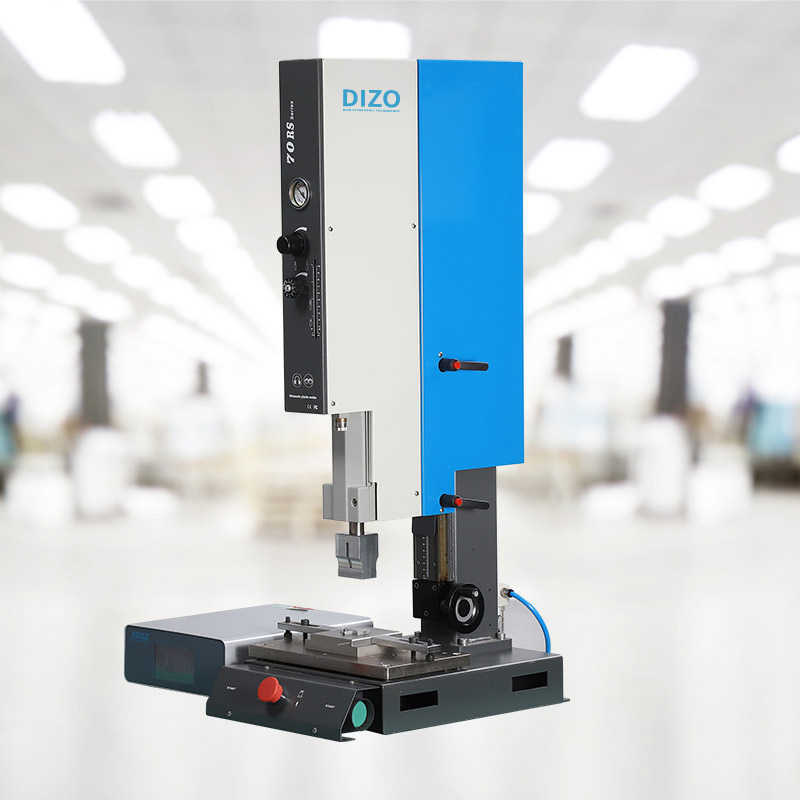
Materials
- Plastic Welding: Uses thermoplastic materials like PE, PP, PVC, and ABS, which melt when heated.
- Metal Welding: Involves metals such as steel and aluminum, requiring much higher temperatures to melt.
Heat Requirements
- Plastic Welding: Operates at lower temperatures (300°F to 500°F).
- Metal Welding: Requires much higher temperatures (1,000°F+).
Techniques and Equipment
- Plastic Welding: Uses simpler methods like hot gas and ultrasonic welding.
- Metal Welding: Requires complex machinery like TIG and MIG welders.
Applications
- Plastic Welding: Ideal for industries like automotive, packaging, and medical devices.
- Metal Welding: Used in aerospace, construction, and automotive manufacturing.
Cost
- Plastic Welding: Generally more cost-effective.
- Metal Welding: More expensive due to higher equipment and material costs.
Types of Plastics That Can Be Welded
Can plastic be welded together? The answer is that not all plastics are equally suitable for welding. Plastic welding is a versatile process, but not all plastics can be welded with the same ease or using the same methods. Below are the most common types of plastics used in plastic welding:
1. Polyethylene (PE)
- Used in packaging, tanks, and piping.
- Welded using hot gas and extrusion welding.
2. Polypropylene (PP)
- Common in automotive parts and chemical tanks.
- Welded using hot gas, extrusion, and laser welding.
3. Polyvinyl Chloride (PVC)
- Used for pipes and flooring.
- Welded with hot gas, solvent, and extrusion welding.
4. Acrylonitrile Butadiene Styrene (ABS)
- Found in automotive and electronic parts.
- Welded with hot gas, laser, and ultrasonic welding.
5. Polystyrene (PS)
- Used in packaging and disposable products.
- Welded with hot gas and solvent welding.
6. Polycarbonate (PC)
- Common in eyewear and safety equipment.
- Welded with laser, ultrasonic, and hot gas welding.
7. Polyamide (Nylon)
- Used in automotive parts and gears.
- Welded with hot gas, ultrasonic, and laser welding.
How to Choose the Right Plastic for Welding
Choosing the right plastic for welding involves several important considerations to ensure the bond is strong, durable, and appropriate for its intended use. Here are the key factors to consider:
1. Type of Plastic
Different types of plastics have varying properties that affect how well they can be welded. For instance:
- Polyethylene (PE)and Polypropylene (PP) are commonly used for chemical tanks and piping and are ideal for hot gas or extrusion welding.
- Polyvinyl Chloride (PVC)and ABS are often used in automotive and electrical applications and can be welded using methods like hot gas and solvent welding.
2. Surface Condition
The condition of the plastic's surface is crucial for successful welding. Dirty or contaminated surfaces can weaken the bond. Always ensure the surfaces are clean, dry, and free from oils, dirt, or residues that could interfere with the welding process.
3. Thickness of the Material
Thicker materials require more heat and time to melt, while thinner materials are more sensitive to heat. When welding thicker plastics, methods like extrusion welding or hot plate welding are preferred as they offer better control over heat distribution.
4. Welding Method
Certain plastics perform better with specific welding methods. For example:
- Ultrasonic welding is ideal for thin materials like polystyrene.
- Hot gas welding is great for materials like PVC and PE.
Select the method that aligns with the plastic's properties and the material's requirements for strength and durability.
5. The Intended Use
Consider the final application of the welded plastic. If the part will be exposed to high temperatures, chemicals, or heavy stress, select a plastic that can withstand those conditions.
For instance, high-performance plastics like Polycarbonate (PC) may be required for parts exposed to impact or heat.
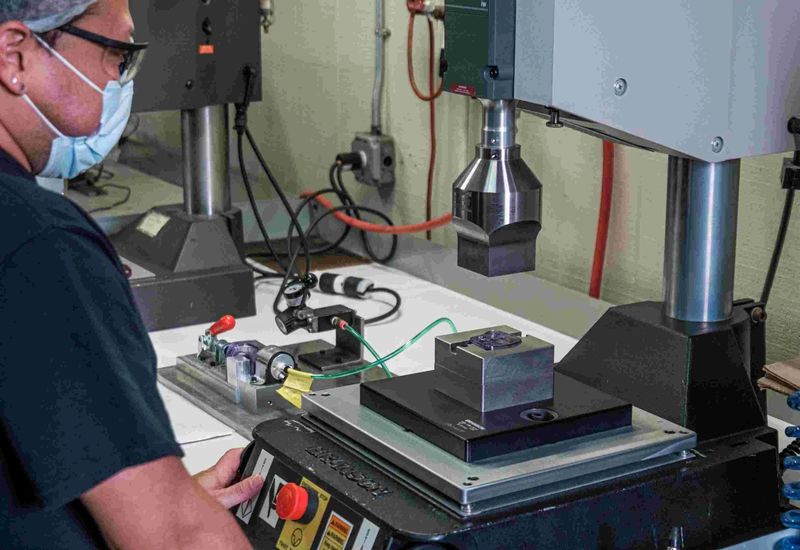
6. The Cost of the Plastic Material
The cost of different plastics can vary significantly. While some, like polyethylene, are inexpensive, others like Polyamide (Nylon) or Polycarbonate can be costly. Factor in both material cost and welding technique cost when making your decision.
FAQs
Is plastic welding safe?
Yes, plastic welding is safe when performed with the correct equipment and precautions. Using appropriate safety gear, like goggles, gloves, and protective clothing, helps minimize risks from heat and fumes.
Is plastic welding strong?
Yes, plastic welding can produce joints that are as strong, if not stronger, than the original plastic material, depending on the welding method and type of plastic used.
What plastics cannot be welded?
Plastics with high crystallinity or cross-linked polymers, like phenolic and epoxy, are difficult or impossible to weld effectively due to their resistance to melting and reshaping.
Can I do plastic welding myself, or do I need to hire a professional?
While simple plastic welding tasks can be done with DIY kits, more complex or industrial welding applications require professional equipment and expertise to ensure a strong, durable weld.
What are the key considerations when choosing a plastic welding method?
The most important factors are the type of plastic being used, the thickness of the material, the intended application, and the cost. Different welding methods may be more effective for certain plastics or types of products.
Wrapping It Up: Contact Dizo and Choose a Plastic Welder Today
Plastic welding is a versatile and effective technique for joining plastic materials across various industries. Whether you're looking to repair plastic products, assemble parts for manufacturing, or design custom products, choosing the right welding method and plastic material is crucial.
If you're unsure about which approach is best for your needs, Dizo is here to help. With years of experience and advanced equipment, our team can guide you through the welding machine selection and execution of plastic welding projects. Contact Dizo today to find the perfect solution for your plastic welding needs!


